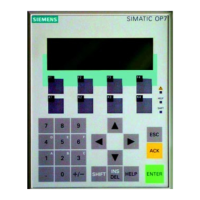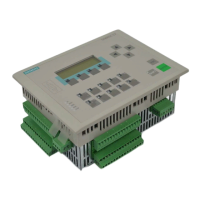6-27
Batch
flexible
, Manual
C79000-G7076-C650-02
6.5 Equipment occupancy
As a basic rule an apparatus can at a given time only be involved in the
production of a single batch. BATCH flexible’s batch control manages
equipment allocation in on-line operation in such a way that an apparatus
(identified by the UNIT block) can only be occupied by one batch. The
apparatus is seized by batch control when the recipe starts or while it is in
progress, when the first AF starts with this apparatus. Batch control prevents
duplicate allocations of the apparatus in on-line operation – in other words,
other batches which require the apparatus must wait until the occupying
batch releases the apparatus. In order to exclude or reduce waiting periods of
this type even during the planning phase, batch planning manages the
planned equipment occupancy times and displays possible conflicts during
on-line processing of the batches as planned multiple allocations.
The ’Equipment occupancy’ window (see Figure 5-4, Page 5-10) presents a
diagrammatic overview of all apparatuses for which batches were created.
Via the ’View’ menu this overview is presented as a tree diagram of the
batches (in the lefthand pane) as well as the batch list associated with the
selected apparatus. You will notice any clashes immediately by the red
color-coding in both the tree structure and in the list.
A selected batch can be processed in exactly the same way as in the batch
planning list. Chaining batches can only be carried out with the batch
planning list.
The batch tree includes all batches with their allocated apparatuses (in other
words, it is the inverse of the equipment tree) and is called via
’View’ ––> ’View batch’.
Apparatuses which multiple batches require simultaneously as a result of the
planned batch starting times and occupancy times will be color-coded red.
The same applies also to planned batches which would involve multiple
occupancy of an apparatus.
General
information
Equipment
occupancy list
Batch tree
Multiple
occupancy of
equipment
Batch planning

